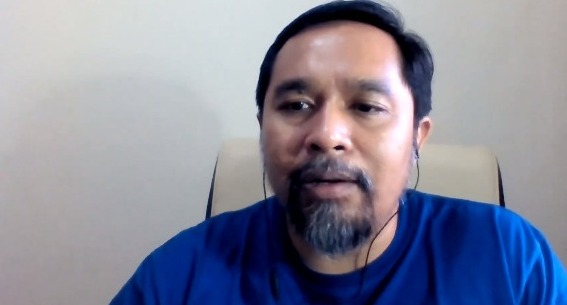Problems and Challenges of Digital Journalism in Indonesia
There are two things that greatly affect the mass media business lately. First, is digital disruption which is getting more and more common. Then the second is the Covid-19 pandemic. Both are considered to have greatly changed the landscape of the media business pattern in Indonesia. Not only upstream, but also downstream.
While still in conventional media, journalists controlled upstream to downstream. “Meanwhile, the current media upstream to downstream has changed completely, and there are even distribution problems to the accessors,” said Suwarjono, Editor-in-Chief of Arkamedia Group which is flashy with the Suara.com portal, on Friday (10/9/2021) at the National Webinar with the theme of Digital Journalism Business Models in Indonesia.
This National Webinar is made by lecturers who are members of the study interest and Digital Journalism research cluster. Lecturers in this study are also currently conducting research collaborations on Journalism and Digital Media.
In the past, conventional media could regulate distribution and even develop, now distribution is controlled by giant developers of the digital world such as Google and social media.
Both are the top two distributors to the viewer. “After that, there are aggregators such as babe, kurio, to private conversation platforms WhatsApp and Line,” said Suwarjono, giving an example of distribution lines that are not even directly controlled by digital media.
Another problem in the digital media sector is advertising. Suwarjono said, one of the effects of digital disruption is that some advertisers often turn to social media platforms. “The problem in digital media is that you still have to pay taxes, pay this and that, but influencers don’t,” said Suwarjono, who was the chairman of AJI (Independence Journalist Alliance) in 2014.
On the other hand, according to Wahyu, digital disruption has made the mass media life and death on the edge. In order to be read, all media compete to provide the latest and fastest news. “As a result, there are many similar news stories,” said Wahyu Dhyatmika, CEO of Tempo, one of the speakers for this webinar. Not to mention, the COVID-19 pandemic has accelerated this disruption, he said.
“When news tends to be uniform, its relevance to public needs decreases,” he said again. In the long term, public trust will also decrease. In turn, content richness will also decrease as well.
“This makes the urgency even stronger, because the pandemic accelerates digital disruption,” Wahyu said.
During the disruption, what Elin Kristi calls an existential crisis in journalism also occurred. Elin Kristi, Vice Editor at Liputan6.com, said that the media business is still in the process of finding a digital journalism business model.
In this digital era, various challenges also emerge. “People now have the ability and freedom to voice themselves. Everyone can load media in this digital era,” added Elin, a seasoned journalist who started his career in the Jawa Pos media.
According to Elin, news media revenues have fallen drastically in the last few decades. “There is no clear business model to sustain news in the digital era. High quality content is the key, but good journalism does not come free,” She said in a presentation screen explaining the reality of digital media today.
In addition, there is also the threat of hoaxes emerging from social media. Especially hoaxes about covid-19. The increase in Covid-19 hoaxes in the pandemic era has substantially increased the demand for trusted media.
“From here we learned that by doing fact checks, the media cannot run alone. We have to work with the public,” said Elin, who is also an activist for digital literacy and checkfact.com.
The speakers in this webinar are all members of the IFCN international fact checking network. The media that are members of the IFCN are committed to fighting hoaxes. In order to gain public trust, only this commitment can make it easy for the public to determine which one is trustworthy in the midst of a flood of content in the current digital era.




